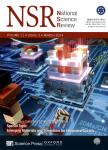Paleomagnetic, tectonic and geochronological constraints for Permian-Triassic oroclinal bending of the Mongolian collage
作者机构:Centre for Lithospheric ResearchCzech Geological Survey Institut Terre et Environnement de StrasbourgUniversité de Strasbourg Institute of Petrology and Structural Geology Charles University Xinjiang Research Center for Mineral Resources Xinjiang Institute of Ecology and Geography Chinese Academy of Sciences Earth and Environmental Sciences Department of Earth Sciences University of Geneva Institute of Geological Sciences Polish Academy of Sciences
出 版 物:《National Science Review》 (国家科学评论(英文版))
年 卷 期:2023年第10卷第2期
页 面:9-11页
核心收录:
学科分类:070904[理学-构造地质学] 070903[理学-古生物学与地层学(含:古人类学)] 0709[理学-地质学] 070801[理学-固体地球物理学] 07[理学] 0708[理学-地球物理学]
基 金:financially supported by the GACR EXPRO Project 19-27682X to K.S.and O.L the National Natural Science Foundation of China(41888101) to W.X the International Partnership Program of Chinese Academy of Sciences(CAS)(132744KYSB20190039) IGCP 622(CAS)
主 题:ASIAN OROGENIC BELT DEFORMATION SIBERIA ALTAI
摘 要:The Central Asian Orogenic Belt constitutes the Kazakhstan and Mongolian oroclinal collages located between the Tarim-North China collage(TNC)to the south and the Siberian craton to the north(Fig.1a) [1].While the oroclinal bending of the western Kazakhstan collage is widely accepted by the paleomagnetic and tectonic community,the oroclinal bending model of the eastern Mongolian collage is disputed[2,3].Despite differences,



